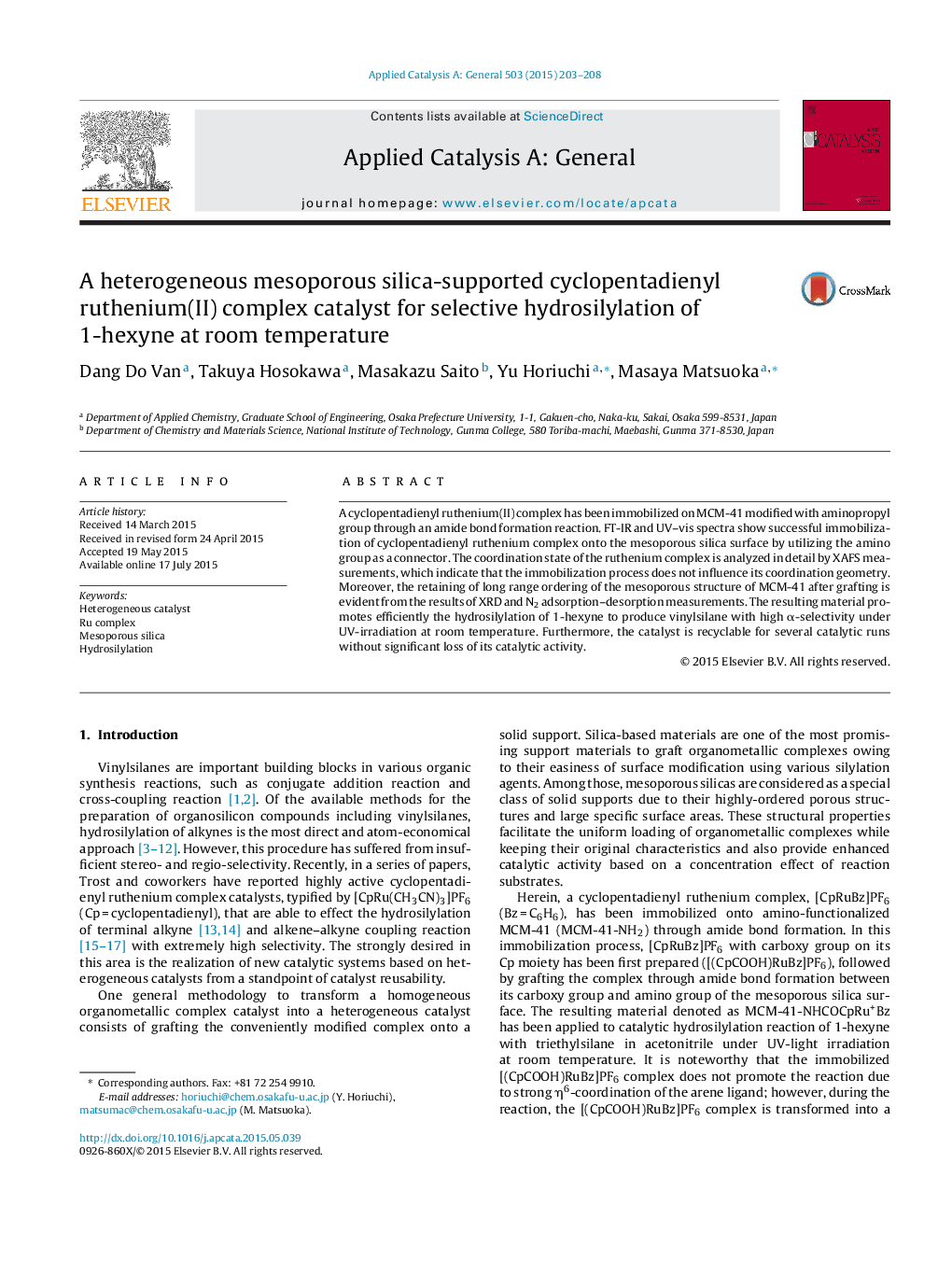| Article ID | Journal | Published Year | Pages | File Type |
|---|---|---|---|---|
| 39262 | Applied Catalysis A: General | 2015 | 6 Pages |
•Ru complex was grafted on amino-functionalized MCM-41 via amide bond formation.•The heterogeneous Ru complex catalyst promoted hydrosilylation of 1-hexyne.•Highly selective α-vinylsilane production was attained.•The reaction proceeded through in-situ generation of a catalytically active complex.
A cyclopentadienyl ruthenium(II) complex has been immobilized on MCM-41 modified with aminopropyl group through an amide bond formation reaction. FT-IR and UV–vis spectra show successful immobilization of cyclopentadienyl ruthenium complex onto the mesoporous silica surface by utilizing the amino group as a connector. The coordination state of the ruthenium complex is analyzed in detail by XAFS measurements, which indicate that the immobilization process does not influence its coordination geometry. Moreover, the retaining of long range ordering of the mesoporous structure of MCM-41 after grafting is evident from the results of XRD and N2 adsorption–desorption measurements. The resulting material promotes efficiently the hydrosilylation of 1-hexyne to produce vinylsilane with high α-selectivity under UV-irradiation at room temperature. Furthermore, the catalyst is recyclable for several catalytic runs without significant loss of its catalytic activity.
Graphical abstractFigure optionsDownload full-size imageDownload high-quality image (176 K)Download as PowerPoint slide
